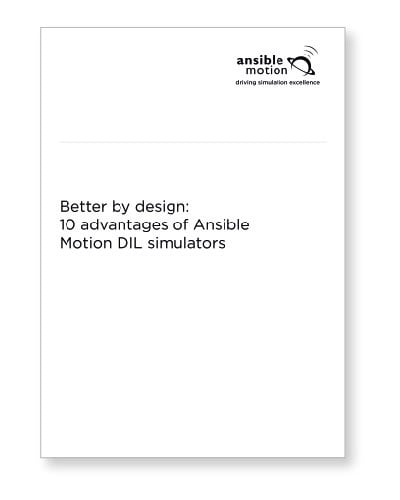 IAAPS Ltd (Institute for Advanced Automotive Propulsion Systems) and Ansible Motion have entered a technical cooperation agreement to leverage the strengths of both organisations to deliver advanced simulation and testing capabilities to the automotive industry.
IAAPS Ltd (Institute for Advanced Automotive Propulsion Systems) and Ansible Motion have entered a technical cooperation agreement to leverage the strengths of both organisations to deliver advanced simulation and testing capabilities to the automotive industry.
The partnership will lead to the development of a suite of accurate automotive tools necessary to evaluate and validate complex mechanical components in virtual domains and enable vehicle manufacturers and suppliers to achieve higher levels of virtual validation across chassis, powertrain and braking, supporting shorter time-to-market, lower costs and lower carbon emission targets.
IAAPS is a leader in vehicle propulsion research and the cooperation will see it become Ansible Motion’s first UK service partner. As part of this collaboration, Ansible Motion has installed a Theta Seat Driver-in-the-Loop (DIL) simulator at the IAAPS facility in Bristol, UK.

This simulator will be integrated with IAAPS’ mechanical Hardware-in-the-Loop (mHIL) powertrain dynamometer, marking a significant advancement categorised as “mHIL + DIL integration." This enhances IAAPS’ ability to conduct high-fidelity, real-world vehicle research and development in a laboratory setting.
Professor Rob Oliver, Managing Director of IAAPS, commented:
This partnership with Ansible Motion represents a significant advancement in our capabilities. By integrating its state-of-the-art DIL technology with our extensive R&D infrastructure, we are set to provide new capabilities for our partners, accelerating the introduction of new technologies to the market.
Dan Clark, Managing Director of Ansible Motion, stated:
The increasing complexity and significant rise in interfaces between vehicle architectures and components require new validation tools and techniques that support the cost and time targets all OEMs need to remain competitive while finding ways to differentiate and still delight the end user. Our partnership will also unlock more sustainable ways to validate mechanical hardware that traditionally would have required expensive track time and significant resource consumption.
Initial projects driven by this new partnership are already underway. Examples include the validation of Brake-by-Wire (BbW), adaptive suspension, Steer-by-Wire (SbW) and cockpit architectures for User Experience (UX) such as infotainment and driver assistance (ADAS).
Read the full announcement on the IAAPS website.



